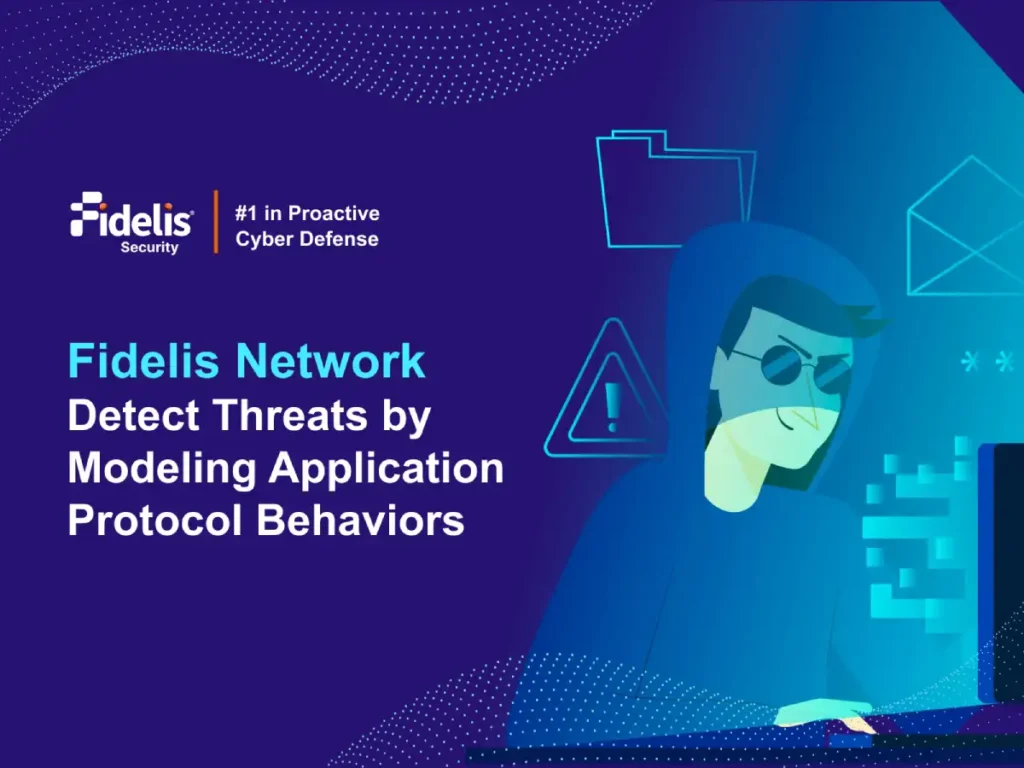Simply put, metadata refers to ‘data about data.’ Before we get into the depths of network metadata, let’s address some basic questions one might have.
What is a Data Packet in Network?
A data packet is a unit of data transmitted through network communication.
What Information is Contained in this Packet?
A data packet contains essential information required for successful data transmission.
The information includes:
- Header: The routing information like source and destination IP addresses, protocol type, and sequencing data.
- Payload: The actual data or message.
- Footer: Includes error-checking mechanisms like checksums to ensure data integrity.
This packet structure ensures that the actual data can be transmitted accurately to the right destination through the network. So, what is packet metadata then?
Packet metadata is the set of details extracted from a data packet, which includes:
- Source and destination IP addresses
- Timestamp of transmission
- Packet size
- Protocol type (TCP, UDP, etc.)
- Traffic direction (inbound or outbound)
- Packet sequencing (for reassembling fragmented data)
These details help network administrators understand key aspects such as who is communicating, to whom, when, where, and which protocols are being used, without needing to look at the actual content or message. This enables the tracking of overall network performance and the detection of potential issues without analyzing the content itself.
Traditional network data captures, like PCAP (Packet Capture), provide deep insights into packets through techniques like network deep packet inspection. These methods analyze both headers and payloads of each packet, allowing for a comprehensive inspection. However, their large size and complex data handling make them cumbersome. In contrast, network metadata is lighter, as it only captures essential details, making it ideal for real-time monitoring.
Because it requires less storage, it is more cost-effective and scalable, making it especially well-suited for large networks, where detecting anomalies and ensuring security are key priorities.
To effectively capture network metadata, companies must choose a robust network metadata-capturing tool.
To better understand the differences between traditional network data capture methods and network metadata capture, let’s compare the two approaches across key factors.
| Comparison Factor | Traditional Network Data Capture (Eg: PCAP) | Network Metadata Capture |
|---|---|---|
| Purpose | Provides a detailed capture of raw packets, including both headers and payloads. | Provides important details such as who is communicating, to whom communicating, where the communication happening, and which protocols are being used. |
| Focus | Focuses on raw data content, including the entire data packet, which can be large and difficult to analyze at scale. | Focuses on device types, data flow, and communication patterns. |
| Data Processing Speed | Processing speed can be slower due to the large volume of raw packet data, requiring more resources. | Serialized at wire speed for faster data packet processing. |
| Data Ingestion | Requires a specialized collector to capture and analyze raw packets, making it less efficient for large-scale or real-time analysis. | In formats that can be easily processed by existing data tools and systems. |
| Scalability & Real-time Analysis | Less efficient and scalable for real-time analysis due to the size of the packet captures, which are harder to process and store in large quantities. | More efficient and scalable for real-time network traffic analysis. |
| Storage Requirements | Requires significant storage space because it captures and stores the entire packet. | Requires significantly less storage, as it only records key communication details. |
| Data Granularity | Provides high granularity, which can be useful for deep packet analysis. | Provides less granular data but offers valuable summary-level insights that are often sufficient for detection and monitoring. |
| Security & Privacy Concerns | Can raise security and privacy concerns as it stores the entire communication content, including sensitive data. | Reduces privacy risks by not storing the content of communications and focusing only on metadata. |
| Cost of Data Processing | Higher costs due to the need for significant storage and processing power. | More cost-effective, as it requires fewer resources to store and process. |
| Use Case Flexibility | More suited for forensic analysis and troubleshooting, often in highly targeted scenarios where deep packet inspection is needed. | Better suited for continuous network monitoring, anomaly detection, and real-time analysis on a larger scale. |
Unlock the full potential of your network’s metadata and gain actionable insights to:
- Understand the limitations of NetFlow data and packet capture systems
- Learn how rich, historical metadata uncovers hidden security threats
- Discover 4 key insights to transform your threat detection strategy
Why is Metadata Important in Modern Network Management?
Below are the main areas where network metadata is helpful:
1. Optimizing Network Monitoring & Control
Advanced network metadata is dynamic and structured, often as key-value pairs, which can be used in combination with data science techniques by data science teams. This approach transforms unstructured network traffic into detailed and actionable intelligence.
Key uses include:
- Analyzing network patterns, behaviors, and associations.
- Creating more efficient forms of network intelligence that can be modelled, analyzed, and characterized.
- Monitoring network headers, payloads, and traffic flows for better network visibility and control.
2. Dynamic and Scalable Data Collection
Network metadata is increasingly being generated by software sensors that don’t require polling, unlike traditional methods. These sensors can scale with network traffic, providing a flexible way to monitor large, dynamic environments.
Because the data is processed at high speed and does not require the heavy lifting of traditional packet capture methods, organizations can maintain real-time visibility into network performance and security at a much larger scale than before.
These sensors produce high-resolution and reliable data structures that allow users to extract and target specific traffic of interest using key-value pair notation.
3. Real-Time Network Insights for Smarter Decision Making
Machine learning algorithms can help organizations detect anomalies in network traffic by analyzing packet metadata, identifying unusual behavior or patterns that could be security breaches or insider threats, or security gaps. These algorithm-based security solutions improve over time, becoming more precise at recognizing new or previously unknown threats.
By using these tools:
- Security teams can quickly identify threats by analyzing packet metadata and respond to potential issues in real-time.
- It also aids in real-time performance optimization by allowing network operations teams to quickly identify traffic bottlenecks, latency issues, and network congestion.
- Helps network managers to adjust configurations and resources on the fly to optimize network performance by analyzing real-time packet metadata.
- Network operations teams can improve network performance, detect issues faster, and reduce the time needed to make informed decisions.
Benefits of Tapping into Network Metadata
Metadata is crucial for ensuring cybersecurity and network security. Check the major perks of using metadata monitoring in your business:
1. Improved Visibility with Metadata Solutions
Network metadata solutions help detect complex threats that might evade traditional firewall defenses, making it easier to identify and respond to security incidents quickly.
Unlike traditional security measures, metadata offers an in-depth view of network traffic, even revealing activities from network infrastructure devices that are not typically monitored.
By capturing key details like communication patterns, device types, and traffic direction, network metadata provides a more complete picture of network activity, helping security teams spot abnormal behavior that might indicate an attack or breach.
2. Overcoming the Limitations of Firewall-Only Security
Firewalls are needed for security, yet they can only work within a specific perimeter in the complete network, and they can only monitor the data packets that bypass it. It does not track lateral or internal network traffic, which is necessary for a whole security strategy.
Metadata monitoring overcomes this limitation as it works throughout the entire network, not just within a specific perimeter.
3. Risks of Unmanaged Devices
As Internet of Things (IoT) devices become widely used, the potential vulnerabilities they introduce also increase. Many IoT devices have weak or no built-in security, making them prime targets for attackers.
Unmanaged devices like IoT gadgets, printers, and cameras are often not monitored, making them easy targets for attackers to enter and spread through the network unnoticed.
As these devices increasingly become integral to network environments, monitoring their behavior through metadata provides essential protection against new attack vectors.
4. Beyond Endpoint Detection and Event Logs
Endpoint Detection and Response (EDR) and event logs are effective for monitoring and analyzing individual devices. However, they don’t have the potential to cover the full picture of internal network traffic. They mainly focus on managed devices and cannot track activity from unmanaged devices.
Metadata solutions, on the other hand, capture and analyze all network traffic, including from unmanaged devices, providing a more complete view of the entire network’s activity.
5. Proactive Network Monitoring
Relying only on EDR and event logs can lead to a reactive security approach, with the administrative teams always responding to threats without understanding their origins.
Proactive network monitoring with metadata allows for continuous scanning and analysis of the network. Metadata-driven solutions can detect activity patterns that signal potential threats, allowing security teams to prevent incidents before they escalate. This proactive approach helps allocate resources effectively to reduce network risks.
Fidelis Network® Detection and Response (NDR): Ensuring Security with Network Metadata
Fidelis’ NDR Solution offers a strong solution for detecting and responding to network threats using network metadata.
This advanced metadata-driven approach gives you a deep view of network traffic across all ports and protocols, enabling swift identification of malicious activities and security threats.
Fidelis Network® tackles key network security challenges by offering in-depth protection, including:
- Data Exfiltration Prevention: Detects and prevents advanced data theft using patented Deep Session Inspection to unpack and extract hidden files.
- Lateral Movement Detection: Tracks what’s moving across the network, how it’s moving, and who has access, utilizing automated risk-aware terrain mapping and traffic analysis tools.
- Malware Threat Detection: Decrypts bi-directional encrypted traffic for in-depth malware detection, providing full content and context for network analysis.
Fidelis empowers businesses to understand their environments more thoroughly by using automated, risk-aware terrain mapping and patented traffic analysis tools. The platform ensures complete visibility across all network activities, proactively identifying anomalous behaviors, potential threats, and malicious activity before it escalates.
Discover how Fidelis Deep Session Inspection (DSI) can help you:
- Analyze network to detect threats and data leaks
- Reassemble network traffic for detailed threat detection
- Extract key metadata to enhance visibility and accuracy
- Take immediate action with automated responses like packet deletion & quarantine



